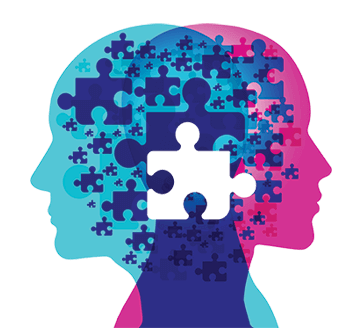SALES / SUPPORT : 844-232-4816
How to Fight ADHD When You're a Graphic Designer
Living with Attention Deficit/Hyperactivity Disorder can render it difficult to complete tasks, especially if you have a time crunch. Though many tend to think of it as a childhood disorder (and it is the most commonly diagnosed childhood disorder, according to WebMD), it can continue into adulthood, adding another level of complexity to life. Not only do you have to fight against the tendency of your brain to change directions without warning, ADHD can also make it difficult to sit still while
you're working, manage your time effectively, set and work to achieve goals, and stay organized.
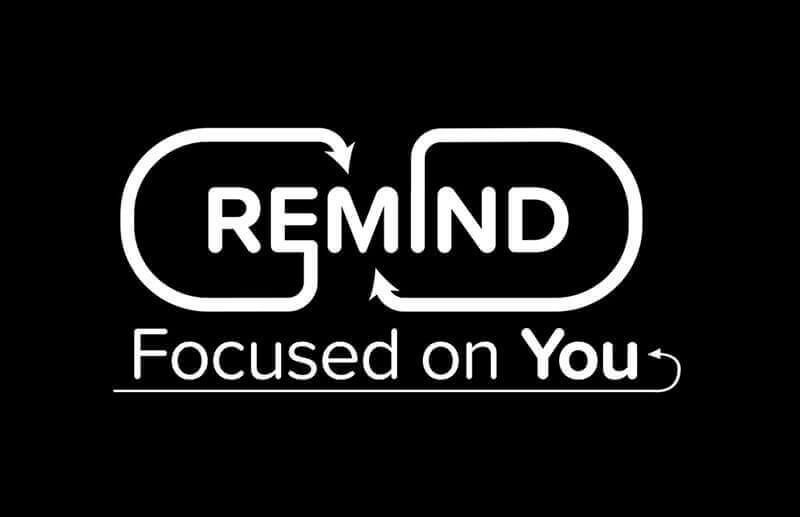
Source: Behance
There's a factor that makes this even more likely to be an issue for graphic designers and other creative types. According to the Scientific American article" The Creative Gifts of ADHD," research has supported the idea that "people with ADHD characteristics are more likely to reach higher levels of creative thought and achievement." Italics theirs - clearly, there is a significant number of people in creative lines of work who have ADHD tendencies, even if not actually diagnosed. In a world where we have constant demands on our attention, it’s easy enough to be distracted even without suffering from ADHD. What does that mean for professional graphic designers doing custom design work for clients?
enough to be distracted even without suffering from ADHD. What does that mean for graphic designers?
Graphic design requires creativity, but it also demands attention to detail, the ability to sit still for long enough to complete tasks, patience and focus, and a dedication to your work. These requirements can seem next to impossible if you have ADHD.
But the very existence of so many creative people who do have ADHD goes to show that it is possible to make a success of your career as a graphic designer, regardless of whether you have attention deficit or not. Designer Kasey J. Wang argues that ADHD should not be called a "deficit," but rather a "difference in cognition," pointing out that designers with ADHD are frequently driven to take existing designs and make them better, smoother, and more attractive.
Another graphic designer, diagnosed with ADHD, Adam McIntyre, founder of Brandpacks.com advises to be impulsive, "Especially when working in digital formats, there's no real cost to trying a new design, or altering what's already there. Being impulsive enables you to try many more variations than perhaps our non-impulsive counterparts would. There's nothing to lose, after all, it's just pixels."
Regardless of where you stand on the issue, ADHD is something that many have to deal with, no matter what area they work in.
So, as a graphic designer, what can you do to make your success more likely?
Take Steps to Avoid Distractions
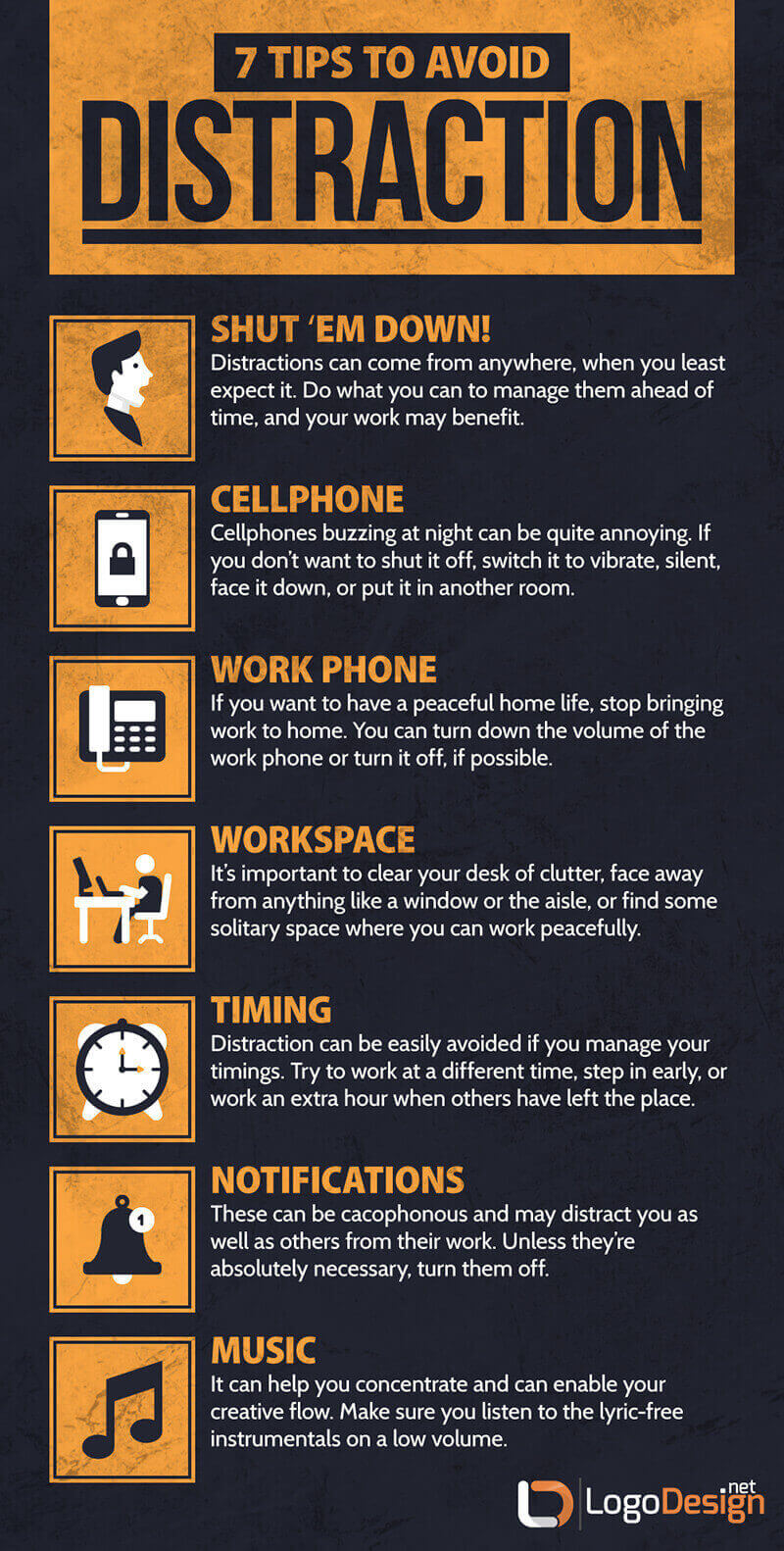
Before you start laughing at the very idea of someone with ADHD "avoiding distractions," let's hasten to say that, in this case, we're just talking about practical things that you can do to try to minimize the intrusions of the world outside your current project.
Is your cell phone right by you at all times? Putting it away, such as on a charger in another room, might be a good idea. If you're not entirely comfortable with that, then turning it off, setting it to vibrate or completely silent, keeping it face-down, or going to airplane mode are all viable options for keeping the phone from sucking you in. After you have worked, say on a medical logo design concepts, for the amount of time you’ve set as a goal, you can check your phone to make sure that you haven't missed anything vital.
Analyze your creative routine. Where do distractions commonly pop up? Are you distracted by notifications on your computer? Can you disable them? What about your workspace? Do you face a window or an aisle where people frequently pass by? Do you listen to music or the radio as you work? While some of these may be good cognitive sources and stimulations for visual designs, they’re slowing you down.
In an article on ADHD in the workplace, ADDItude Magazine emphasizes not only getting work done, but developing a "workplace strategy that will enable you to work at peak efficiency." This can mean different things for different people,

istock.com/artiemedvedev
but one of the suggestions is working earlier or later than the majority of your co-workers, thus finding quiet times with fewer distractions. As a graphic designer, you may work in an office or from home or you might consider a garden shed converted into a home office - either way, adjusting your work times if possible can help you to circumvent the additional distractions that inevitably come from the presence of others.
Adam McIntyre also suggests to "get work done when you've found focus and motivation. If it's outside work hours, during your lunch break or 10 minutes before home-time - don't stop when you're focussed or "in the zone". You never know how long it'll be until you're distracted again."
Though there are no guarantees that you will be able to entirely get rid of external distractions - it's pretty much impossible to be creative in a vacuum, after all - taking a good look at your environment and circumstances and then taking steps to change what needs to be changed can help to mitigate the effects of those distractions.
Set Goals and Rewards
As a graphic designer, you likely have large goals and small goals to reach for. Perhaps you have a new client who needs a physician’s office logo design for their company, including different variations for them to select from, with spreads for different media and marketing outlets. Looking at the overall goal with this client can be overwhelming, so breaking it down into more manageable goals is a good idea for anyone, but especially for a designer who has ADHD.
Taking a project one step at a time, with each step as the only goal you concentrate on, can help you to keep moving forward without being overwhelmed.
For example, firstly understand the creative brief. Does your client needs a therapist logo or dental clinic brand identity? What is the company focussed on? Who are their target audience? etc.
Within the small goals that you set, try to work for a certain amount of time, such as forty-five minutes. Set an alarm to let you know when you’ve reached that mini-goal; that way you won’t have to frequently glance away from your work to of designing a unique company logo or graphic design projects, just to check the clock.
Setting alarms for other things can be a good idea, too. From lunch time, to break time, to quitting time, using alarms for anything work-related can ensure that there’s something there to remind you to re-focus when you get distracted.
Within your framework of goals, include rewards for each one successfully accomplished. These can be small, matching the size of the goal - for each forty-five minutes spent designing logo concepts for example, a cup of coffee or a small snack or five minutes to check your email. Whatever keeps you motivated - within reason.
Get Some Exercise
As another possibility for a reward, a short walk after each period of working may help you to re-focus, wake up your brain, and enliven your creativity.
Walking, stretching, and other forms of mild activity are a great way to keep the creative juices flowing, frequently employed by a variety of creative types. For a graphic designer with ADHD, taking a break to get a little exercise can also discharge some of your pent-up energy, letting you take an attention break without feeling guilty about it, and then sit back down at your project and get your focus back where it's meant to be.
Get Organized - And Stay Organized
This can be a tough one for anybody, let alone for someone with attention deficit. Organization truly is a skill - and not everyone has it. But like any skill, it's something that can be learned.
Basic organization is helped by things like list making, doing one thing at a time, knowing your limits, and keeping a schedule. As a designer, you likely have a lot of irons in the fire at any given time. Practicing your skills of organization can help you corral all of your projects into a manageable timeline, thus enabling you to put your focus on one at a time.
Caleb Backe, a Health & Wellness Expert for Maple Holistics, suggests to focus on your deadline by keeping communication open with your clients.
You should always aim to meet your deadlines, but if you see that you are unable to for a specific reason, let them know ahead of time, explain the situation and apologize, and tell them exactly how much longer the project will take you. With that in mind, make sure to keep track of deadlines. Place each one in your calendar, and make sure to set a reminder for a few days before so that you are not caught off-guard.
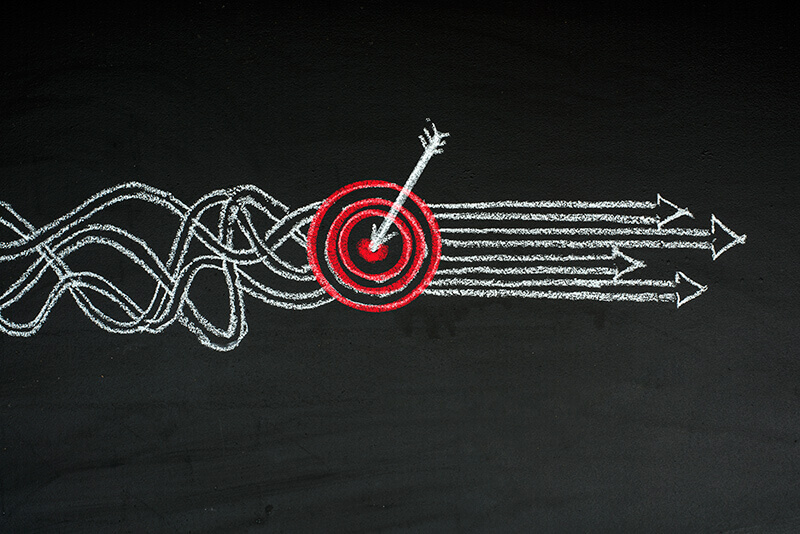
istock.com/marrio31
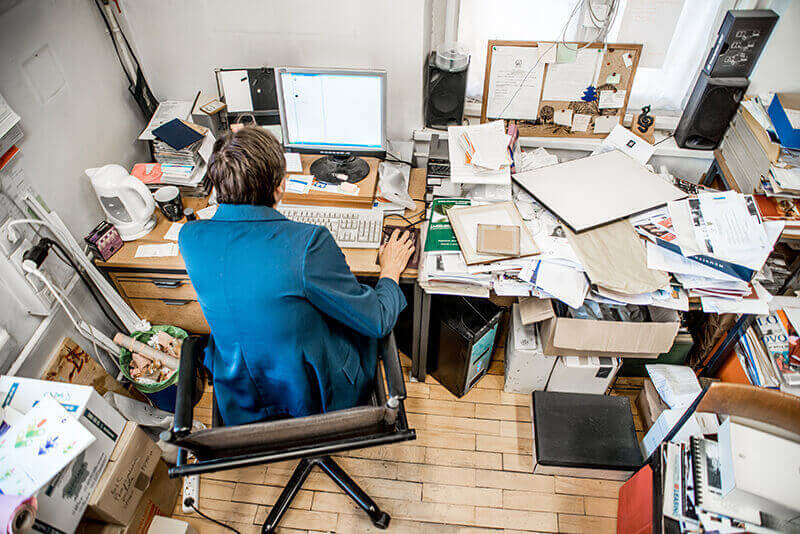
istock.com/CasarsaGuru
The more clutter you're surrounded by, the more opportunities you have to be distracted. Try to make a habit of putting things away when you’re done with them, rather than just leaving them where they are. Have a place for everything and everything in its place, especially work-related objects. File folders, whether real or virtual, are invaluable for helping to keep track of your clients and projects; a good daily planner can be a great help, too, if you remember to write things down. If you’re browsing for music logo inspirations, then have a folder for music logos. Likewise if you are searching for nurse icons or logos, then make sure to save them in a separate folder.
Of course, with ADHD, your executive functioning is impaired, which means that the very act of getting organized is that much harder to actually accomplish. If it is something that really feels beyond your reach, the good news is that there are plenty of people out there who do have this skill, and have spent years perfecting it. Reaching out to a professional organizer, whether once or twice or repeatedly as needed, can help you to get your projects and your workload under control, thus improving your ability to focus.
Unexpected Side Benefits of Designing with ADHD
Creativity is notorious for striking randomly. Though having a creative routine is often beneficial, many find that they find inspiration in unexpected places. If you have ADHD, the chances are that going to "unexpected places" is not exactly unexpected.
Say, you were trying to find inspirations for health logos for a health shop owner, and instead started thinking about how a polygon lion design would look nice for a finance brand.
So what do you do when your brain decides to take a little jaunt and take your attention along?
It isn't easy, but you can try to make your ADHD work for you. When you get distracted, whether because you allow it to happen or because your brain decides it wants to go play elsewhere, be aware of possible inspirations in whatever area you end up looking at. If you are drawn to an internet site with childcare logo inspirations, take in details, facts, information, layouts, font choices, or anything else that you might be able to use in your own work. If distracted by things going on outside your own window or inside your house, the same methodology can apply.
Designing With ADHD -Addressing the Reality
A very real debate over ADHD, as well as other disorders, involves the use of medication to treat the symptoms. While parents must decide for their children, based on the circumstances, whether it will help the child in school, and what the child’s physician recommends, an adult with ADHD faces the choice on their own. However, the opinion of your doctor should always come into play before this decision is made.
The medication your doctor may prescribe can be either a stimulant or a non-stimulant medication. For graphic designers, a chief concern may be the possible impact that medication could have on the creativity of the designer. This is something that has to be weighed on an individual basis, and perhaps deserves a trial run to see what the effects are; after all, ADHD itself can have an impact on the creativity of the designer, as well.
There are other effects that can occur with ADHD medication, too. ADDitude lists stomach aches, headaches, sleeplessness, tics, and emotional problems.
When the dosage is too high, stimulants can cause children or even adults to seem "spacey" or "zombie-like," or to be uncharacteristically tearful or irritable (a condition known as emotional lability).
The aim of the logo, apart from the message it delivers, is to stick in the minds of those who see it.
All of these play a role in the decision whether or not to turn to medication to control or mitigate the symptoms of ADHD.
However, with the use of different approaches - whether medication or using tips on dealing with ADHD, such as in this article - each individual can find what works best for them. It may take some trial and error, and sometimes a combination of approaches works the best. But the fact remains that, as common as ADHD is, both children and adults may have to deal with the complexities that come along with the condition throughout their lives.
As a graphic designer, it can be a struggle to overcome the stress of keeping clients happy and the possibility of competition, while still fueling your own creativity. ADHD can be another layer of stress to deal with, but it doesn't have to stop your career from progressing.
Reviewed by: Zaheer Dodhia
CEO and Founder LogoDesign.Net
